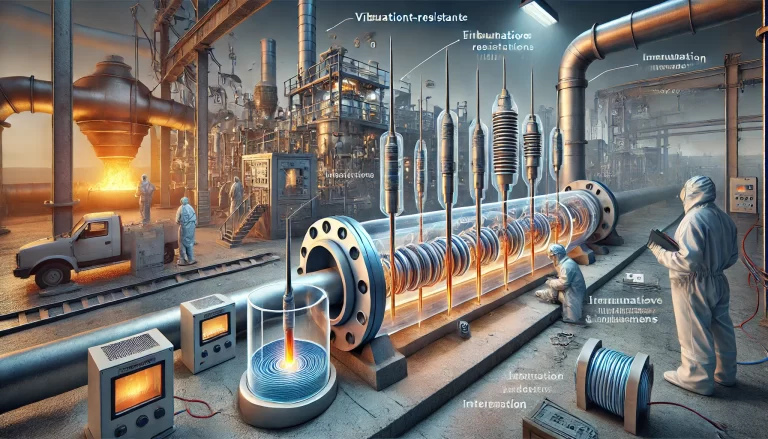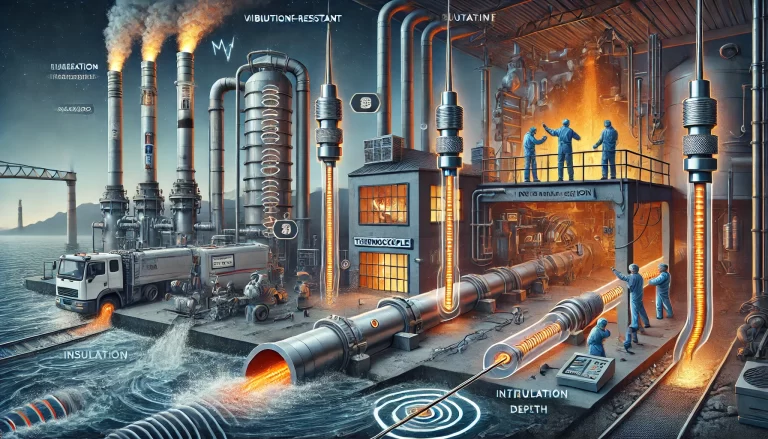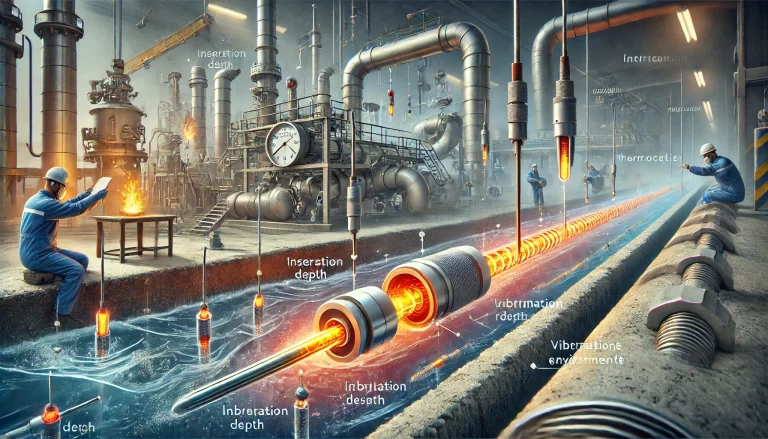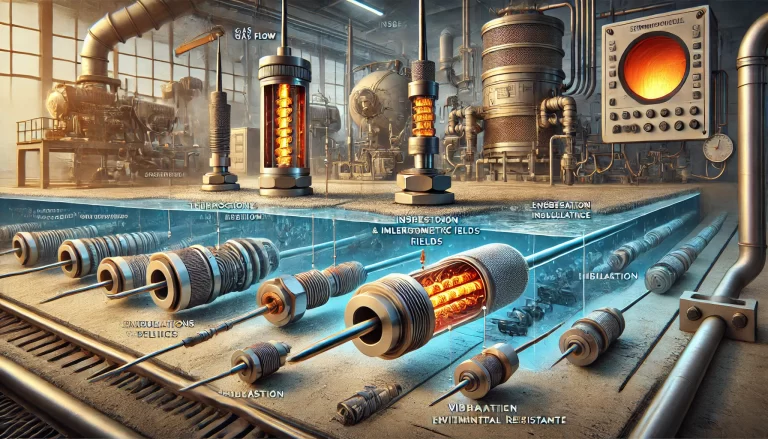Thermocouples are widely used sensors for measuring temperature in various industrial applications. To ensure accurate temperature readings, proper installation of thermocouples is critical. Several factors should be considered during installation, including the positioning, environmental conditions, and the mechanical setup of the thermocouple. This article will provide an in-depth look at the key requirements for thermocouple installation to ensure optimal performance.
1. Selection of a Representative Measurement Point
The most crucial aspect of thermocouple installation is selecting the correct measurement point. The position where the thermocouple is installed must accurately represent the temperature of the medium being measured. It should be placed in an area where the temperature is stable and uniform. Installing the thermocouple in a region with temperature fluctuations, dead zones, or near external heat or cold sources will likely result in inaccurate measurements.
For example, when installing in a pipeline, the thermocouple should be placed at the center of the flow rather than near the walls, as the temperature can vary significantly in different sections. Similarly, in large containers, installing the thermocouple in the middle section provides a better representation of the overall temperature.

2. Minimizing External Environmental Influence
External environmental factors such as heat, cold, and radiation can interfere with thermocouple readings. To minimize these effects, the installation location should avoid direct exposure to extreme environmental conditions. For instance, thermocouples should not be installed near windows or doors where external temperature changes may affect the sensor. Similarly, avoid areas where strong electromagnetic fields or radiation from machinery may influence the measurement.
Installing a protective shield or enclosure around the thermocouple is another way to protect it from external influences. These shields help maintain an insulated environment, ensuring the temperature readings are based solely on the medium of interest.
3. Ensuring Proper Contact with the Medium
For accurate temperature measurement, the thermocouple must have direct and good contact with the medium being measured. If the thermocouple is used for gas measurement, it should be positioned so that it is fully immersed in the gas flow. If it is measuring a liquid, it must be fully submerged in the liquid to avoid inaccurate readings.
In cases where thermocouples are used in solid materials or surfaces, careful attention is needed to ensure that the sensor is in firm contact with the surface. Any gaps or air pockets can result in heat transfer inefficiency, leading to errors in the temperature readings.

4. Avoiding Vibration and Mechanical Stress
In industrial environments, mechanical vibration can be a significant challenge when installing thermocouples. Vibrations can lead to premature wear and tear on the thermocouple, causing it to fail over time or produce unreliable results. For this reason, thermocouples should be installed in locations with minimal mechanical vibration. If this is unavoidable, using a vibration-resistant thermocouple design, such as spring-loaded probes, can help mitigate the impact of vibrations.
Mechanical stress from bending or stretching the thermocouple during installation should also be avoided. These stresses can damage the thermocouple wire or cause breaks, leading to inaccurate temperature measurements.
5. Adequate Insertion Depth
The insertion depth of the thermocouple is another critical factor to consider. If the thermocouple is not inserted deep enough into the medium, the readings may be affected by external temperature variations. The general guideline is that the thermocouple’s insertion depth should be at least 8 to 10 times the diameter of the protection tube. This ensures that the sensor is sufficiently immersed in the medium and that external temperature influences are minimized.
For example, in gas measurement, the thermocouple must be installed in a position where the sensor is surrounded by the gas flow. For liquid or molten materials, the thermocouple should be fully submerged to ensure the entire sensor is exposed to the material’s temperature.

6. Insulation and Protective Measures
In high-temperature, corrosive, or high-pressure environments, additional protective measures are required to ensure the longevity and accuracy of the thermocouple. In such environments, thermocouples are usually installed with protective sheaths or tubes made of corrosion-resistant and heat-resistant materials. These protective coverings help prevent damage to the sensor from the surrounding environment, ensuring that the thermocouple can function correctly for extended periods.
For instance, in furnaces or boilers where the temperatures are extremely high, thermocouples made from special materials like Inconel or ceramic protection tubes are commonly used. These materials can withstand the harsh conditions and maintain the accuracy of the temperature readings.
7. Calibration and Maintenance
Finally, to ensure long-term accuracy, thermocouples should be regularly calibrated and maintained. Over time, thermocouples can drift due to environmental factors, mechanical wear, or material degradation. Regular calibration checks help ensure that the thermocouple readings remain accurate and within the required tolerance range.
Additionally, periodic inspection of the thermocouple and its protective sheath can help identify any wear or damage that could lead to inaccurate readings. Ensuring that the sensor remains clean and free of debris is also essential for maintaining accurate performance.

Conclusion
Proper thermocouple installation is vital for ensuring accurate and reliable temperature measurements. Selecting a representative measurement point, avoiding external environmental influences, ensuring good contact with the medium, minimizing mechanical stress, and using protective measures in harsh environments are all essential factors that must be considered during installation. Additionally, regular calibration and maintenance are critical for ensuring the longevity and accuracy of the thermocouple. By following these guidelines, thermocouples can provide precise and consistent temperature measurements across various industrial applications.
